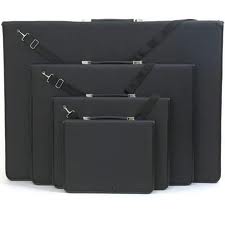 Before we go any further, we’d like to say something: If you don’t have a website, or even an online design portfolio that showcases your talent and previous work, you’re seriously missing out on some golden opportunities, Pilgrim. Both are a brilliant means of getting your name and designs to the masses, and without either, you’re running the risk of falling flat on the bill payments each month. That being said, even the best of us sometimes need a few pointers on how to improve our online portfolios. Optimizing that bundle of joy to best represent you and your style is
Before we go any further, we’d like to say something: If you don’t have a website, or even an online design portfolio that showcases your talent and previous work, you’re seriously missing out on some golden opportunities, Pilgrim. Both are a brilliant means of getting your name and designs to the masses, and without either, you’re running the risk of falling flat on the bill payments each month. That being said, even the best of us sometimes need a few pointers on how to improve our online portfolios. Optimizing that bundle of joy to best represent you and your style is
a daunting task, and we certainly feel your pain. With that in mind, we’d like to offer up a few of our choice tips on the subject. If you’re looking for a few fool-proof ways to bolster your online design portfolio, you’ve arrived, Soldier, starting with:
- One-Page-It: We’ve seen a few designs in our day that make use of a multi-page portfolio spread, but we have to admit, most of them pale in comparison to the single page design. The idea here is to lead your viewer from the top of the joint to the bottom, peppering them with examples of your work as they go. By the time they reach the bottom, they should have such a clear picture of your skills that they’ll be begging you to do their design dirty work. Another option is to use sliding windows, and though this is a fairly new thought, we do think it’s a viable one. Consider both, but whatever you do, just don’t make us click any page links, okay?
- Keep Her Up to Date: Another good point to consider is the updated nature of your work. Have you included any samples of your most recent leanings? If your portfolio is awash in nothing but last year’s designs, you run the risk of not only showcasing what you’ve learned since, but also appearing outdated and hokey. At all times, include the best and brightest among your collection, sparing no spaces for older stuff.
- It’s Alive: If you can, always include live demos of your web design work. This not only allows your potential clients to see your work as it was meant to be seen, but it also helps to reassure them that your designs are Internet ready.



